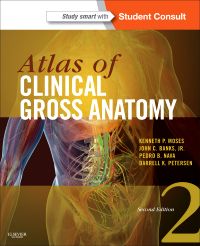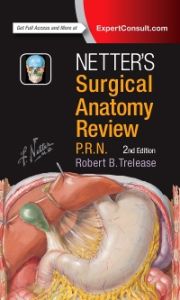Non-Alcoholic Fatty Liver Disease, An Issue of Clinics in Liver Disease, 1st Edition
Author :
Paul J. Gaglio
Due to the current obesity epidemic, non-alcoholic fatty liver disease (NAFLD) is prevalent in a significant portion of the United States patient population. It is being increasingly recognized that NAFLD affects both adults and children and can prog
...view more
Due to the current obesity epidemic, non-alcoholic fatty liver disease (NAFLD) is prevalent in a significant portion of the United States patient population. It is being increasingly recognized that NAFLD affects both adults and children and can progress to end stage liver disease with resultant cirrhosis, portal hypertension, and hepatocellular carcinoma. In addition, several extrahepatic conditions may be linked to NAFLD including cardiovascular disease, insulin requiring and type 2 diabetes mellitus, obstructive sleep apnea, colonic adenomas, hyperuricemia, vitamin D deficiency, hyperferritinemia, pancreatic steatosis, hypothyroidism, and polycystic ovarian syndrome. Therapies for NAFLD are evolving rapidly. This issue will analyze patient demographics, risk factors, pathophysiology, patient presentation, and treatments for NAFLD.
Due to the current obesity epidemic, non-alcoholic fatty liver disease (NAFLD) is prevalent in a significant portion of the United States patient population. It is being increasingly recognized that NAFLD affects both adults and children and can progress to end stage liver disease with resultant cirrhosis, portal hypertension, and hepatocellular carcinoma. In addition, several extrahepatic conditions may be linked to NAFLD including cardiovascular disease, insulin requiring and type 2 diabetes mellitus, obstructive sleep apnea, colonic adenomas, hyperuricemia, vitamin D deficiency, hyperferritinemia, pancreatic steatosis, hypothyroidism, and polycystic ovarian syndrome. Therapies for NAFLD are evolving rapidly. This issue will analyze patient demographics, risk factors, pathophysiology, patient presentation, and treatments for NAFLD.
Author Information
By Paul J. Gaglio, MD, FACP, AGAF, FAASLD, Montefiore Medical Center and Albert Einstein College of Medicine, Bronx, NY
| ISBN Number | 9780323416962 |
|---|---|
| Main Author | By Paul J. Gaglio, MD, FACP, AGAF, FAASLD |
| Copyright Year | 2016 |
| Edition Number | 1 |
| Format | Book |
| Trim | 152w x 229h (6.00" x 9.00") |
| Imprint | Elsevier |
| Page Count | 0 |
| Publication Date | 14 Apr 2016 |
| Stock Status | IN STOCK - This may take up to 5 business days to ship |
Write Your Own Review
Only registered users can write reviews. Please sign in or create an account
product
https://www.us.elsevierhealth.com/non-alcoholic-fatty-liver-disease-an-issue-of-clinics-in-liver-disease-9780323416962.html
2103
Non-Alcoholic Fatty Liver Disease, An Issue of Clinics in Liver Disease
https://www.us.elsevierhealth.com/media/catalog/product/9/7/9780323416962.jpg
81.74
108.99
USD
InStock
/Medicine/Hepatology
/Clinics
/Clinics
143
4388725
5255041
1
3
8
4182692
5145120
Due to the current obesity epidemic, non-alcoholic fatty liver disease (NAFLD) is prevalent in a significant portion of the United States patient population. It is being increasingly recognized that NAFLD affects both adults and children and can progress to end stage liver disease with resultant cirrhosis, portal hypertension, and hepatocellular carcinoma. In addition, several extrahepatic conditions may be linked to NAFLD including cardiovascular disease, insulin requiring and type 2 diabetes mellitus, obstructive sleep apnea, colonic adenomas, hyperuricemia, vitamin D deficiency, hyperferritinemia, pancreatic steatosis, hypothyroidism, and polycystic ovarian syndrome. Therapies for NAFLD are evolving rapidly. This issue will analyze patient demographics, risk factors, pathophysiology, patient presentation, and treatments for NAFLD. Due to the current obesity epidemic, non-alcoholic fatty liver disease (NAFLD) is prevalent in a significant portion of the United States patient population. It is being increasingly recognized that NAFLD affects both adults and children and can progress to end stage liver disease with resultant cirrhosis, portal hypertension, and hepatocellular carcinoma. In addition, several extrahepatic conditions may be linked to NAFLD including cardiovascular disease, insulin requiring and type 2 diabetes mellitus, obstructive sleep apnea, colonic adenomas, hyperuricemia, vitamin D deficiency, hyperferritinemia, pancreatic steatosis, hypothyroidism, and polycystic ovarian syndrome. Therapies for NAFLD are evolving rapidly. This issue will analyze patient demographics, risk factors, pathophysiology, patient presentation, and treatments for NAFLD.
0
0
add-to-cart
9780323416962
2016
Professional
By Paul J. Gaglio, MD, FACP, AGAF, FAASLD
2016
1
Book
152w x 229h (6.00" x 9.00")
Elsevier
0
Apr 14, 2016
IN STOCK - This may take up to 5 business days to ship
By <STRONG>Paul J. Gaglio</STRONG>, MD, FACP, AGAF, FAASLD, Montefiore Medical Center and Albert Einstein College of Medicine, Bronx, NY
Clinics
Clinics
The Clinics: Internal Medicine
No
No
No
No
Please Select
Please Select
Please Select
Related Products
-
20% OFF
 Flash Cards
Flash Cards
-
20% OFF
 Book
Book
-
20% OFF
 Book
Book
-
20% OFF
 Book
Book
-
20% OFF
 Online Resource
Netter's Dissection Video Modules (Retail Access Card)
Online Resource
Netter's Dissection Video Modules (Retail Access Card)University of North Carolina Chapel Hill and Frank H. Netter
Oct 2015
Special Price $144.79 $180.99 -
20% OFF
 Flash Cards
Flash Cards
-
20% OFF
 Book
Nolte's The Human Brain in Photographs and Diagrams
Book
Nolte's The Human Brain in Photographs and DiagramsTodd W. Vanderah
Jan 2019
Special Price $51.19 $63.99 -
20% OFF
 Book
Book
-
20% OFF
 Flash Cards
Flash Cards
-
20% OFF
 Book
Book




